Click to view our Accessibility Statement or contact us with accessibility-related questions















Mechanical Keyboards 101 - An Introduction To The Hobby

search
close
Sort by: Newest
keyboard_arrow_downeprenrem
0
Mar 26, 2024
I was looking for content writing work on job boards, saw the DROP ad, and wanted to know more about the company.
bonzcruzez
0
Sep 20, 2023
I’d need to build a keyboard but picking up this article today really eased my mind. well written!
krnl download
hdstreamz.uno
hdstreamz.uno
(Edited)

sabarivasan
1
Oct 10, 2022
Dumb question: Are mechanical keyboards available for Macs or is this a Windows-only thing?
alileckeys
0
Oct 16, 2022
sabarivasanYou can totally hook them up with Macs! And it's not a dumb question at all, I had the same thought when I was first starting out. I am a die-hard Mac user and I built a 40% that I use with mine all the time.
keypatgaming
3
Oct 7, 2021
yesterday I got really overwhelmed looking at all the parts I’d need to build a keyboard but picking up this article today really eased my mind. well written!
youraverageakeyboardnerd
2
Sep 16, 2021
What is a good beginner keyboard that sounds good that is not custom? Thanks!
Pastelist66
1
Jul 12, 2021
What a great article! This is my first visit to Drop. I was looking for content writing work on job boards, saw the DROP ad, and wanted to know more about the company. Coincidentally, I just purchased a (split, angled) Freestyle Pro for its ergonomics and keyboard programmability without realizing there is an entire community behind mechanical keyboards! Without any industry knowledge, I chose cherry browns based on the description of the feel and sound. I find the Freestyle keyboard to be a bit wide and rangy for my arthritic hands, but I'm trying to adapt. Had I known there were smaller layouts available, I might have been more discriminating. ;-) Now I'm off to mechanically keyboard my application! Cheers, Elisabeth.
seaside
2
May 30, 2021
I'm sure this has been stated before by others... I want the keyboard that is in the first picture... how do I go about getting/buiding it?!?!?! I see the keycap set is here but the board kit itself... what is it?
(Edited)

HunnyRay
1
May 27, 2021
Thanks for dedicating your time to explaining the basics. I’ve always been interested in getting into the scene, but get too overwhelmed when I think about trying out building a keyboard myself. Definitely something I want to start pursuing!
MrOHow
0
May 17, 2021
Thanks for this primer! I've loved keyboards for ages and just stumbled into this world! Looking so forward to checking it out and adding to my beginner collection. I'm guessing you find the style you like by trial and error huh? Here's to the journey! Thanks again! O.
Showing 13 of 99
PRODUCTS YOU MAY LIKE
Trending Posts in Mechanical Keyboards

RealRage_TV
software?
Hi I'm new to Drop and i just received my Keyboard i have been waiting for months for by Drop x MTN Dew x Borderlands movie and didn't know if there was a software like Logitech's for the keyboards. if anyone could help please let me know
Nov 20, 2024

jdsvdropper
Drop ENTER keyboard with DCX Sleeper Mac variants and Rocky Bird
Black Drop ENTER keyboard with DCX Sleeper Mac variants for the Option and Command keys, and Rocky Bird red and black DCX keycaps.
Nov 19, 2024
AngryTank
Favorite Artisans
COME FORTH SHENRON!
Purple, Dragon Balls, and Seta! What more does a simple man need?
Nov 17, 2024
InsufferablePedant
ZealPC Aqua Zilents
Please ignore the filthy keyboard, it's been on a shelf for a minute.
Nov 15, 2024

Neekolas714
Kicks & Keebs
Alpha Bravo Smoke
Finally finished my Keychron V5. Smooth, beautiful and stylish. What else could there be?
Nov 13, 2024


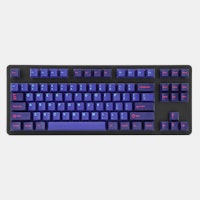
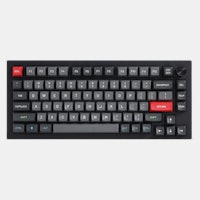
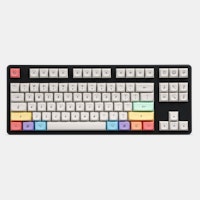
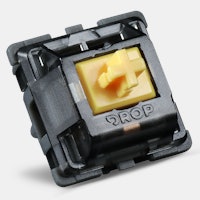

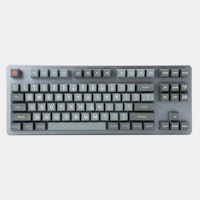
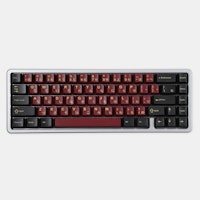
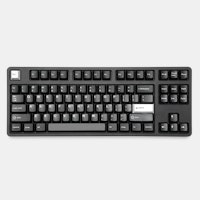
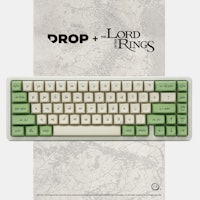








Mechanical keyboards are more than just a fancy tech accessory or noisy-disco-show to display on your desk. Mechanical keyboards are a full blown hobby with a huge cult following, years of history containing community DIY projects and group buys, dedicated forums (and silly forum drama), niche’s within the niche (like artisan keycaps), and more recently big brand names investing, collaborating, and directly interacting with the enthusiast community.
Personally, I’ve been heavily involved in the mechanical keyboard community for many years. I run KeyChatter.com - a website dedicated entirely to mechanical keyboards, have created and sold more than a few custom products and keysets through Massdrop and community vendors, have amassed a collection of 200+ keyboards (see a few here https://deskthority.net/photos-f62/lsb-s-collection-t13590.html), hosted big community meetups, and have done work on countless collaborations, most recently the C70 custom keyboard by GMK. This hobby has definitely been a long, strange journey for me so far, but one that I hope continues for many years to come!
In the coming weeks I’ll be going over every bit of the keyboard hobby with dedicated articles on everything from keyboard anatomy to interviews with company leaders that work in the industry.
What Makes A Mechanical Keyboard Different Before getting into anything too technical, let me clarify that for the sake of this article I will only be going over the two most common types of keyboards used today. Mechanical Switch, and Membrane keyboards, which are often referred to as "rubber domes."
Everyone has their own opinion about why mechanical keyboards are better than common membrane keyboards. To me there is only one definitive answer. On a mechanical keyboard the key registers (actuates) midway into the keypress, not at the very bottom like on a membrane keyboard. This small detail makes typing on a mechanical keyboard far more accurate and comfortable, especially when typing for long durations. People can argue over what feels better all day long, but I've never heard a good argument for membrane keyboards being better in terms of how they actuate.
At first, this may seem like a small difference, but in reality it makes all the difference in the world. With a rubber dome you naturally type harder to ensure the keystroke registers, often hitting a key much harder than is required when typing at speed. On a mechanical keyboard it is possible to type lighter and faster due to the higher actuation point.
The way mechanical keyboards feel compared to membrane keyboards is still the obvious and glaring difference between membrane and mechanical keyboards. You can get tactile switches, clicky tactile switches, linear switches, and even clicky linear switches now! The springs used in most mechanical switches make them feel very crisp compared to the cheap, mushy rubber used in many membrane keyboards. Modifications can provide near limitless options in regards to how a mechanical keyboard feels.
Switches (For my full 101 article on switches see: https://www.massdrop.com/talk/8455/mechanical-keyboard-switches-101-mx-style-switches)
Switches are the heart and soul of a mechanical keyboard. Switches are the individual mechanisms beneath the keycaps that determine what kind of feel (and sound) a keyboard will have. For many people, the real draw of mechanical keyboards is the feeling provided by these mechanical switches.
Switches are commonly referred to by color. You'll see people saying things like "I have a Poker with Reds," or "I put Ergo-Clears in my OTD." With switches, color is much more than just an aesthetic choice, it’s a quick way to know exactly how a switch will sound and feel once you become familiar with all of the brands and variants available.
Alps are the second most popular switch on the market, followed by Topre, though neither are utilized in any common mass produced keyboard you are likely to find in the store. If you have anything other than MX style switches, chances are you are already aware of that and consciously made that decision. In a later article I'll go over all the differences between the mentioned switches and many others (including vintage switches!)
Stabilizers Stabilizers are the mechanisms that keep the larger keys like Space, Shift, Enter, and Backspace in place and, for lack of a better word, stable. These keys still use a single switch like all other keys, but the extra width of the keycap requires extra support to make them sit correctly and feel like all of the other keys.
The sign of a good stabilizer is that it feels the same wherever you press the keycap (for example, far left corner of the spacebar vs center of spacebar), and that the key feels the same as every other key on the keyboard.
Plate The plate is a metal (and sometimes acrylic) sheet that holds the switches in place, and helps reduce strain on the PCB. The plate is part of what determines what physical layout a keyboard can have as well, along with the PCB that must be compatible with the plate. In the example shown, there are huge gaps on the bottom row to provide the user with many options when building the keyboard from scratch and to work with multiple PCBs.
PCB If switches are the heart of a mechanical keyboard, the PCB (printed circuit board) is the brain. The PCB will determine what physical layout the keyboard is capable of having as well as if the keyboard will be programmable or not. The PCB will also determine what kind of cable you will use to connect your keyboard to the computer. Additionally, features like RGB SMD lighting may also be installed, which simultaneously raises the cool-factor and price of the PCB.
Keycaps Keycaps are a BIG deal for a lot of enthusiasts. Community designed keycap sets often sell 3,000 units or more and can cost over $200+ just for the caps alone. When looking at keycaps there are a few major aspects to look for:
Finally, there is the actual material the keycap is made out of to take into consideration. People will often speak like there is a clear best material, and this is simply not the case. The most common plastics used for keycaps are ABS, PBT, and POM (though significantly less than the first two). ABS is very dense and commonly used in a lot custom sets (all Signature Plastics SA and GMK sets). Because ABS is so dense it doesn’t warp very easily. ABS will “shine” overtime as the oils from your skin react with it.
PBT is another very common material used for keycaps. It is less dense than ABS and can warp much more easily, but also has the benefit of being extremely resistant to shine. It also doesn’t fade in sunlight. The differences in these materials and how they are best utilized can be seen very easily in vintage keyboards. Look at this old Apple M0116 for example:
Keyboard Layouts and Sizes With mechanical keyboards you have a huge variety of keyboard sizes, and are able to really find a size that suits you best. Common sizes include fullsize (TK, tenkeyless (TKL), and in the last five years 60% keyboards. Variants of all of these sizes exist, along with everything in between. There are even some boards as small as 30% (Gherkin) and as large as 150ish% (Hyper7)! This article shows many of the more common layouts available today (https://www.massdrop.com/talk/947/keyboard-layouts-explained-in-detail-many-pics)
Recap Do you feel overwhelmed yet? I hope not! Over the next few weeks I will be doing extended articles on every aspect of mechanical keyboards that I just scratched the surface of above. The purpose of this article was just to let you get your toes wet and start understanding all of the different aspects of keyboards that you’ll see being discussed around here constantly.
If you want to learn more on your own in the meantime, I would highly recommend checking out some dedicated keyboard forums like Deskthority.net and Geekhack.org! There is also a thriving Reddit community worth looking at.
Finally, I am here to be a resource for you! Don’t hesitate to reach out to me here in the comments below or from KeyChatter.com’s contact page. There are no stupid questions and I’m always available to help answer anything I can! If you enjoyed this article or have ideas for future articles please let me know!
-Andy/LSB